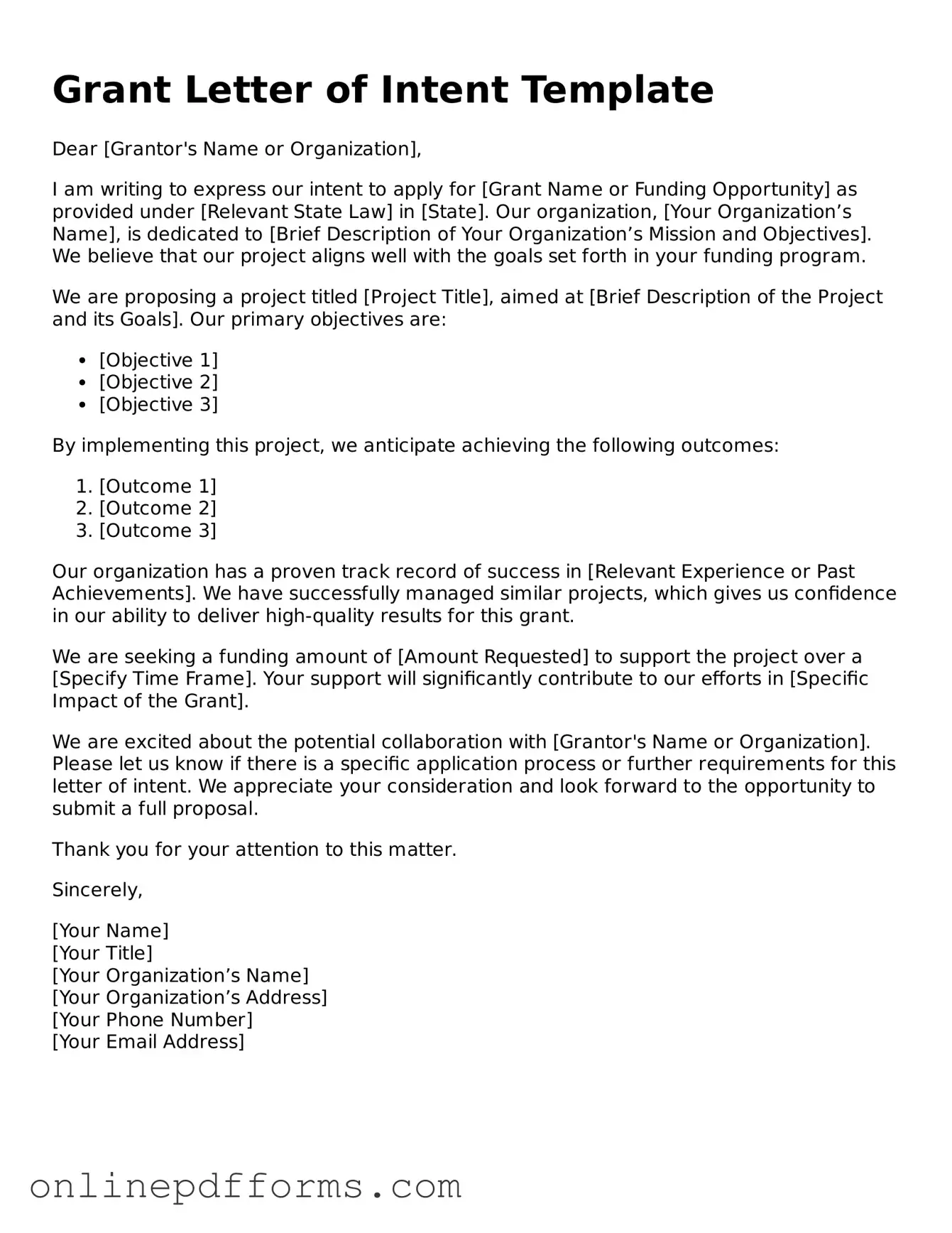Legal Grant Letter of Intent Form
A Grant Letter of Intent form is a preliminary document that expresses an organization’s intention to apply for a grant. This form serves as a way to communicate your project’s goals and significance to potential funders. By filling out this form, you take the first step toward securing funding for your important initiatives.
Ready to get started? Fill out the form by clicking the button below.
Open Grant Letter of Intent Editor Now
